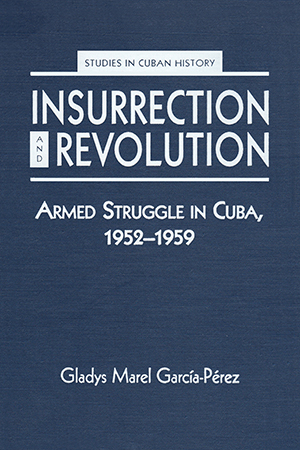
- 1998/138 pages
- Studies in Cuban History
Insurrection and Revolution:
Armed Struggle in Cuba, 1952-1959
García's focus on Matanzas province—an area highly representative of Cuba in demographics, racial patterns, economy, and education—allows a discussion of larger issues about the origins, character, and evolution of the armed struggle against Batista. Garcia argues that the resistance to Batista developed in response principally to local grievances that affected a wide cross-section of the social strata; Fidel Castro's July 26 Movement was able to forge a national revolution with such vitality and appeal precisely because it addressed those local issues.
Among the archival records drawn on in the book are the testimonies and depositions of hundreds of men and women captured and tried by the Batista government. García also interviewed many of the leaders, combatants, laborers, and peasants who participated in various phases of the insurgency. The resulting study illustrates the development of methods of resistance, the evolution of varieties of rebellion, and how disparate social groupings emerged into a single revolutionary movement that swept away not only an unpopular government, but also an entire social system.







